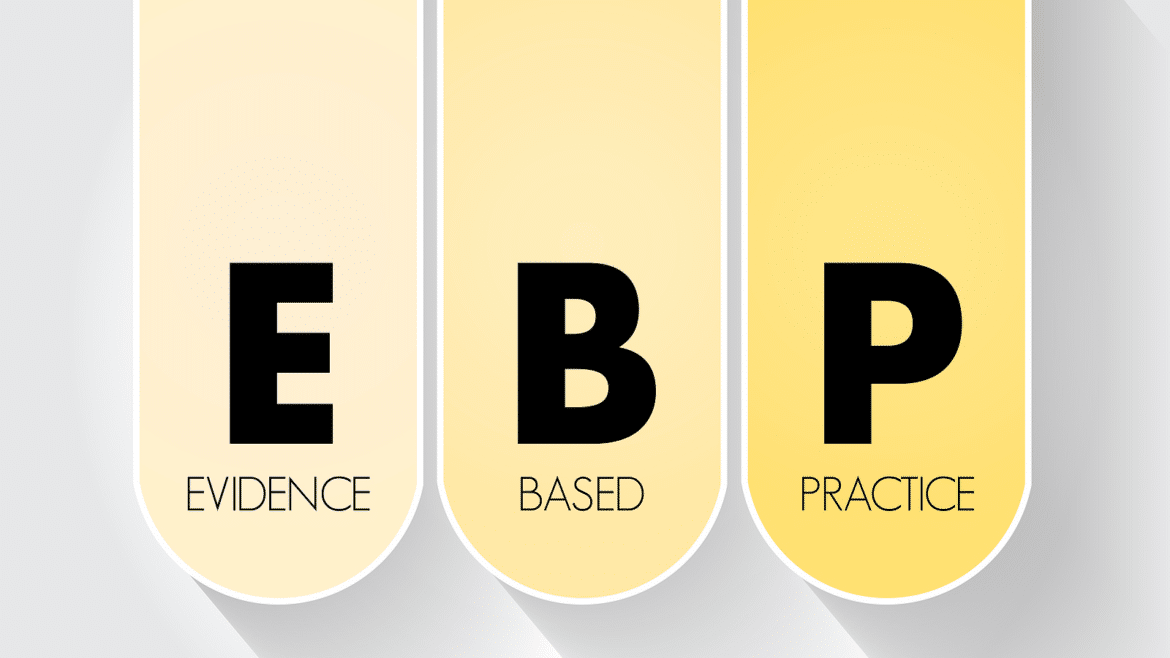Evidence-Based Practice, otherwise known as EBP, is any practice that relies on methods which have been empirically validated – tested & approved. In other words, it is the use of tested approaches when treating a patient rather than relying on your intuition or traditional medicine.
So practitioners using evidence-based Practice can do treatment knowing their decisions are based on the best scientifically supported evidence. For individuals diagnosed with Autism, this means that the treatment plans and interventions used to help them reach their goals are based on research findings rather than simply “trying something out”.
What EBPs have been identified?
The NCAEP, otherwise known as National Clearinghouse on Autism Evidence and Practice, has recently released a report that identified 28 evidence-based practices (EBPs) and ten manualised interventions. The reports were based on a review of the literature published between 1990-2017. Please access the list here.
The NCAEP works alongside the Autism Focused Intervention Resources and Modules (AFIRM) module. AFIRM provides information on implementing EBPs and resources for professionals looking to further develop their skills in this area.
So to know more about the EBPs, For example, “Positive Reinforcement”. Simply select the Positive Reinforcement option identified in the NCAEP reviews from 2014. This will direct you to the AFIRM module, which provides the following:
- An overview of the Practice.
- Step-by-step instructions for implementation.
- A checklist.
- References that demonstrate how this Practice meets the criteria established by the (NPDC).
And the most critical part of AFIRM is the link to a comprehensive library of free-to-download resources and support materials that can be used with Positive Reinforcement.
Comparison of NCAEP and NSP EBPs
For those unfamiliar with the two sources, the National Clearinghouse on Autism Evidence and Practice (NCAEP) published its report in 2020, while the National Standards Project (NSP) published its report in 2015.
Both sources conducted systematic reviews of the literature to identify evidence-based practices. These reports provide detailed information about evidence-based approaches for those looking to learn more regarding the topic.
However, there were some contrasts in both reports, which are worth noting. NCAEP identified four EBPs not included in the NSP’s previous report.
In contrast, NSP identified Language Training (Production) as an established intervention, which was not included in the current NCAEP report.
Secondly, NSP had Comprehensive Behavioral Treatment for Young Children, while NCAEP did not consider comprehensive treatment models in their recent review.
Both reports are valuable resources for those learning more about evidence-based practices. And While there are some contrasts between them, the similarities in both reports make it clear that evidence-based Practice is paramount for those who work with individuals diagnosed with Autism.
As such, it is worthwhile to understand the differences and advantages of both sources to maximise the impact of interventions.
Furthermore, with the rapid progress in Autism research, it is helpful to keep updated with recent evidence-based practices. Doing so can ensure that those diagnosed with Autism are provided with the best possible interventions and care.




